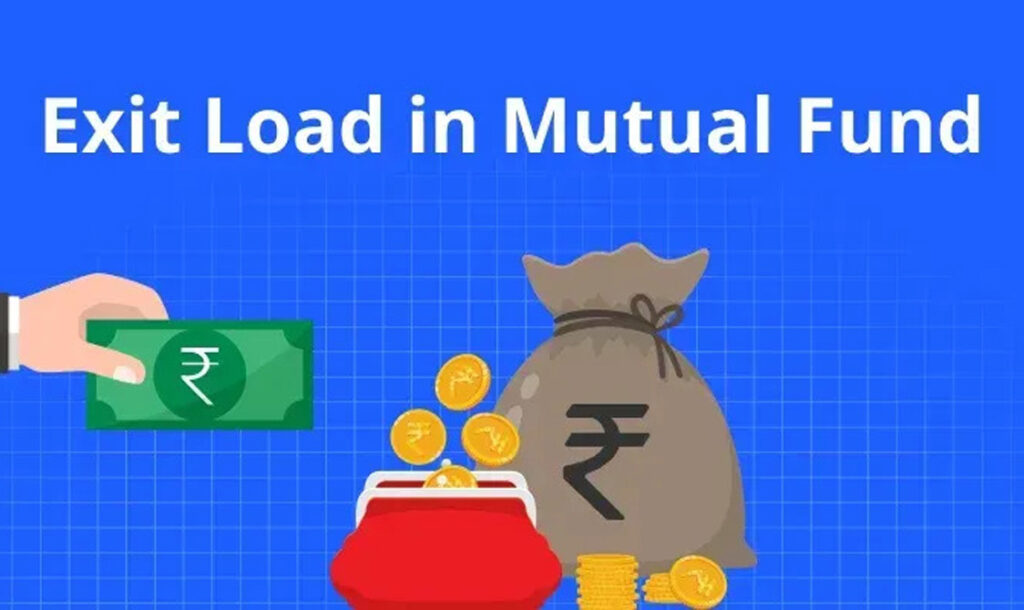What is AUM in Mutual Funds

Introduction:
Over the years, mutual funds have gained a lot of popularity among Indian investors, and become one of the easiest ways to participate in the markets. Mutual funds provide diversification, professional fund management, and flexibility. However, while the investors focus on the returns, expense rations, and fund performance, one factor that they forget to consider is exit load.
Exit load is a small but significant fee that mutual funds may charge when an investor withdraws money from the funds before a specific period of time. Exit load becomes crucial, as it helps in shaping investor behavior and projecting the interests on long-term investors.
If you are interested in understanding the intrigues of exit load in mutual funds, this article is for you. Here we will discuss the meaning of exit load, why it exists, how it can be calculated, different types of exit load, and much more.
What is Exit Load in Mutual Funds?
Exit load is the amount of charge levied by the mutual fund companies on investors if they sell their mutual fund units before a pre-defined time frame. It is generally expressed as a percentage of the redemption amount.
For example, if a fund has a 1% exit load, which is applicable for redemptions within 12 months, and the investor redeems ₹1,00,000 after 6 months, then ₹1,000 will be charged as exit load, and the investor will receive ₹99,000.
Exit load came into existence to discourage very short-term withdrawals, and ensure that investors do not churn their holdings frequently, as it could impact the fund’s stability, and the returns other investors may receive.
Importance of Exit Load in Mutual Funds
You can’t consider exit load as a penalty for early withdrawals. It has several purposes, such as ensuring fairness and stability within the fund ecosystem. Here is why exit load is important in mutual funds:
It Balances Investor Commitment: Exit load encourages investors to stay committed for at least the recommended time frame. As most of the mutual funds are designed for medium to long-term growth, frequent withdrawals are not benefits for these funds.
It Mitigates the Market Impact: When several investors withdraw their money suddenly, there are chances that a circumstance occurs where a mutual fund house is forced to sell securities at an unfavorable price to meet the redemption requests. In such cases, exit load acts as a deterrent against bulk, short-term exits, therefore, reducing volatility for the fund.
It Enhances Fund Manager’s Focus: A predictable pool of capital allows fund managers to plan better. With few sudden redemptions, managers can focus on long-term strategies instead of keeping cash reserves ready for unexpected withdrawals.
It Encourages Informed Decisions: When an investor knows that the exit load will be applicable on their withdrawals, they will reconsider their unit redemption. This encourages informed, well-considered decisions instead of impulsive selling during market fluctuations.
It Facilitates Fund Stability: As exit load ensures that investors don’t pull out money from the funds early, it supports overall fund stability. This benefits not just the fund house, but also the investors who remain invested.
It Aligns with Fund Objective: Generally, mutual funds are designed for long-term growth. Exit loads ensure investor behavior aligns with the fund’s objectives. For example, an equity fund with a 3-year goal structure discourages early exits to keep investors aligned with its long-term strategy.
Exit Load Formula & Step-by-Step Calculation Example
Exit load is easy to understand once you know the formula:
Exit Load = Redemption Amount × Exit Load (%)
Step-by-Step Calculation:
- Determine the holding period: Check how long you’ve held the investment. For example, 6 months.
- Check the exit load structure: Refer to the mutual fund scheme document. Suppose the fund charges 1% exit load if redeemed within 12 months.
- Calculate the exit load: If your redemption amount is ₹1,00,000 and you are exiting at the 6-month mark, the exit load will be:
₹1,00,000 × 1% = ₹1,000.
So, you will receive ₹99,000 after deduction.
This simple formula helps investors calculate in advance how much they would actually receive before redeeming their units. You can also use an exit load calculator, available at Mentor Wealth website, to calculate the amount you will receive.
Types of Exit Load in Mutual Funds
It is interesting to note that not all exit loads are the same. Mutual funds use different structures depending on the scheme’s design and objectives. These are:
Contingent Deferred Sales Charge (CDSC): This type of exit load tends to decrease over time. For example, if a fund has a 3% exit load in the first year, it decreases to 2% in the second year, and further decreases to 1% in the third year. And, after a certain period of time, exit load may reduce to zero.
Contingent Deferred Sales Load (CDSL): CDSL works on the same principle as CDSC, but it is applicable in certain mutual fund categories only. It works as a declining fee based on how long the investor has stayed invested.
Fixed Exit Load: In this exit load type, the exit load is fixed for a certain time. For example, a flat 1% if redeemed before 12 months. Once you cross that period, there’s no exit load at all.
Stepped Exit Load: In this structure, the exit load gradually decreases in steps. For example:
- 1% if redeemed within 6 months
- 0.5% if redeemed within 12 months
- Nil after 12 months
How to Minimize Exit Load Impact in Mutual Funds?
You must understand that there are a few ways through which you can reduce the effects of exit load on your returns. Some ways include:
- Stay Informed: Knowing the exit load terms upfront helps you plan redemptions better.
- Invest for the Long-Term: Investing for the long term not only avoids charges but also maximises compounding benefits.
- Consider Low or No Exit Load Funds: These are ideal if you might need quick access to money.
- Plan Redemptions Wisely: Plan your withdrawals after the exit load period ends. This small step can save you money.
- Track Exit Load Expiry Dates: Mark the expiry dates of exit load periods for each investment. Redeeming after these dates ensures you don’t pay unnecessary charges.
- Use STPs (Systematic Transfer Plans): Instead of redeeming a lump sum, you can transfer money gradually into another scheme through an STP. This reduces the impact of exit load and provides smoother cash flow.
Myths and Facts About Exit Load in Mutual Funds
Exit load often confuses investors. Let’s clear up some common myths:
Myth 1: Exit load is charged every year.
Fact: Exit load is charged only when you redeem your investment before the specified period. If you don’t redeem, no charge applies.
Myth 2: All mutual funds have exit load.
Fact: Not true. There are many mutual funds without exit load, such as short-term debt funds, liquid funds, and certain categories.
Myth 3: Exit load is an extra fee on top of expense ratio.
Fact: Yes, but they are different. Expense ratio is a recurring fee for fund management. Exit load is a one-time fee only on early withdrawals.
Myth 4: Exit load is a penalty by SEBI.
Fact: SEBI regulates the structure, but the charges are levied by mutual fund houses, not SEBI.
Myth 5: Exit load makes mutual funds expensive.
Fact: Exit load can be avoided by staying invested as per the fund’s recommended holding period. For long-term investors, it rarely becomes an issue.
Conclusion
Exit load in mutual funds is a tool designed to bring discipline, reduce volatility, and protect investors who remain invested. While it may seem like an extra cost, in reality, it aligns investor behaviour with the fund’s long-term objectives and ensures smoother management of pooled capital.
For investors, the key is to understand the exit load structure before investing, plan redemptions carefully, and focus on long-term goals. By doing so, you can avoid unnecessary costs and make the most of your mutual fund journey.
At Mentor Wealth, we simplify such complexities for our clients. From explaining terms like exit load and AUM to guiding you through fund selection and portfolio planning, our role as a trusted financial partner is to help you invest smarter. With the right advice and a clear understanding of mutual fund structures, you can build wealth confidently and steadily.

Let’s grow your wealth, together
We’ve Spent 10+ Years Helping Clients
Like You Find Financial Confidence
Insights that empower your investments
Explore expert-written blogs on mutual funds, market trends,
and smart investment strategies
Let's build a wealthy Tomorrow
25+ years of experience helping investors find financial confidence



